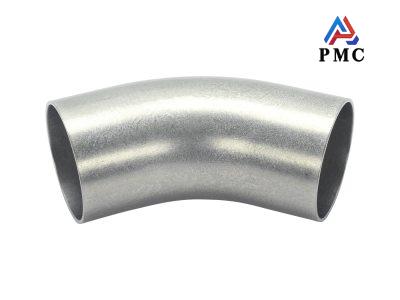
Application of Elbow Fittings in the Oil and Gas Industry
Introduction to elbow fittings
Elbow fittings are key connectors used to change the direction of pipelines in piping systems. They usually connect two pipes of the same or different nominal diameters, allowing the pipeline to achieve 90°, 45°, 180° and other angles. Special angles can also be customized according to project requirements. It is widely used in water supply and drainage, petrochemical industry, natural gas transportation, heating and ventilation, shipbuilding, power engineering and other fields. It is the core component to ensure the flexible layout of the pipeline system and the smooth transportation of fluids.
From the material point of view, elbow fittings can be adapted to different pipe materials. Common ones include carbon steel elbows, stainless steel elbows (such as 304, 316L), alloy steel elbows, plastic elbows, cast iron elbows, copper alloy elbows, etc., which can meet the use requirements of different media (such as water, oil, gas, corrosive fluids) and working conditions (such as high temperature, high pressure, low temperature).
What are the application scenarios of elbow fittings in the oil and gas industry?
Elbow fittings are widely used in the oil and gas industry. Their core role is to adapt to complex terrain, realize pipeline diversion, connect different equipment and ensure stable fluid transportation. Specific application scenarios include the following aspects:
1. Turning and connection of long-distance oil and gas pipelines
Adaptability to complex terrain: Oil and natural gas pipelines often need to cross complex terrains such as mountains, rivers, and deserts. Elbow fittings change the direction of the pipeline to ensure that the pipeline system can be laid continuously and stably. For example, in mountainous or hilly areas, elbows can help pipelines bypass obstacles, reducing construction difficulty and cost.
Pressure and flow control: The design of the elbow (such as the radius of curvature) directly affects the pressure loss and flow velocity distribution of the fluid in the pipeline. Proper elbow selection can optimize piping system performance and reduce energy consumption. For example, in high-pressure transmission scenarios, elbows with large curvature radius can reduce fluid turbulence and lower pressure loss.
2. Key connecting components in oil and gas well facilities
Wellhead and gathering and transportation system: In the wellhead equipment of oil and gas wells, elbow fittings are used to connect equipment such as Christmas trees, separators, and metering devices to ensure the safe and efficient transportation of oil and gas from the wellhead to the gathering and transportation pipelines. Its high pressure resistance and corrosion resistance can adapt to the environment of high temperature, high pressure and corrosive media at the wellhead.
Downhole tool matching: In directional drilling or horizontal well operations, elbow pipe fittings are used in conjunction with downhole drilling tools, logging instruments, etc. to achieve functions such as drilling fluid circulation and logging signal transmission, ensuring the smooth progress of drilling operations.

3. Repair and renovation of piping systems
Partial replacement and repair: When the pipeline needs repair due to corrosion, wear or external force damage, elbow fittings can be used to partially replace the damaged pipe section and restore the integrity of the pipeline system. Its standardized design allows for quick installation and reduces production downtime.
System upgrade and expansion: As the scale of oil and gas field development expands, the pipeline system needs to be upgraded or expanded. Elbow fittings can flexibly adjust the direction of pipelines, connect new equipment or branch pipelines, and meet changes in production needs.
4. Customized applications for special environments
Deep-sea and polar oil and gas development: In extreme environments such as the deep sea or polar regions, elbows and pipe fittings must be made of special materials (such as high-strength alloy steel, low-temperature resistant materials) and anti-corrosion coatings to withstand challenges such as high pressure, low temperature, and seawater corrosion. For example, elbows in deep-sea pipelines need to be fatigue-resistant to cope with the dynamic loads in the marine environment.
High-sulfur oil and gas fields: For high-sulfur oil and gas fields, elbows and pipe fittings must be made of sulfur-resistant corrosion-resistant materials (such as sulfur-resistant steel pipes and inner lining anti-corrosion layers) to prevent corrosive media such as hydrogen sulfide from damaging the pipelines and ensure long-term safe operation.
5. Matching use of pipe accessories and equipment
Valve and flange connection: Elbow pipe fittings are often used in conjunction with valves, flanges and other pipe accessories to form a complete piping system. For example, at the branch of a pipeline, elbows are used in combination with tees and valves to achieve fluid diversion or cutoff control.
Pump and compressor inlet and outlet: In the inlet and outlet pipes of pumps or compressors, elbow fittings are used to guide the fluid to enter or leave the equipment smoothly, reduce the damage to the equipment caused by fluid impact, and extend the service life of the equipment.
Read more: What is the Role of Elbow Fittings in Piping Systems?
- 【Prev】 : Steel Casing Pipe Standard
- 【Next】 : ERW Pipe vs GI Pipe


